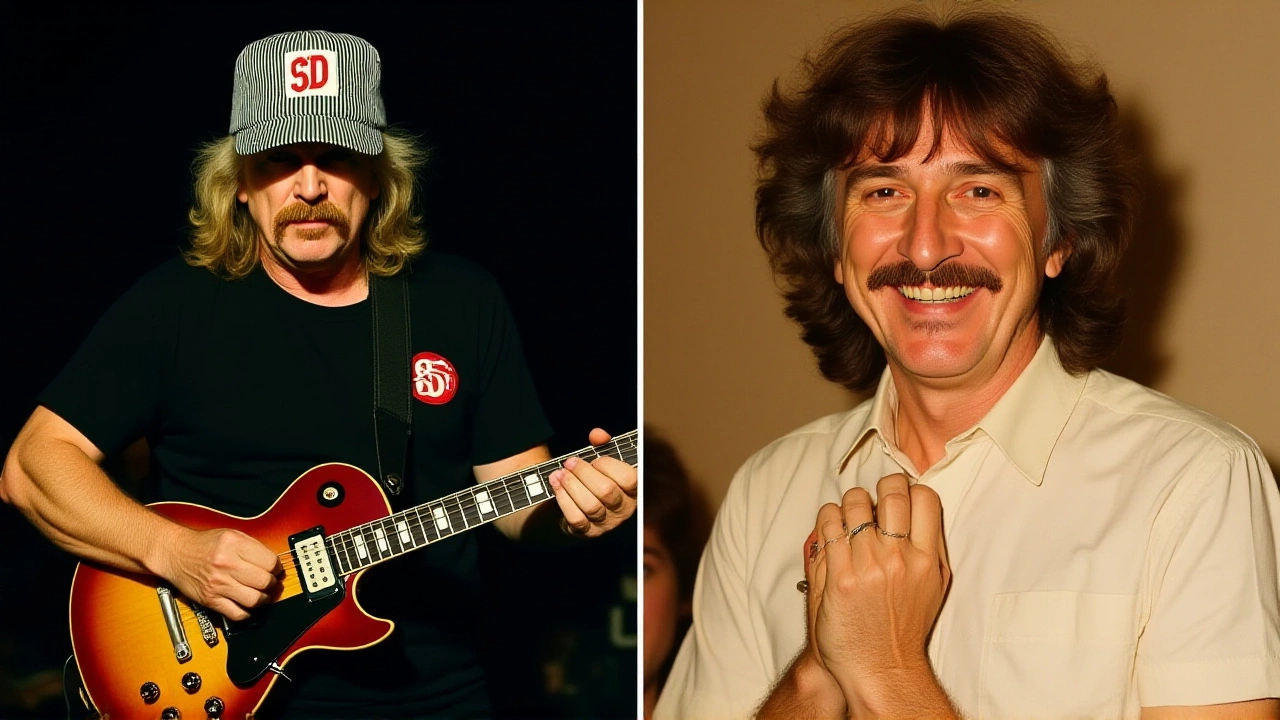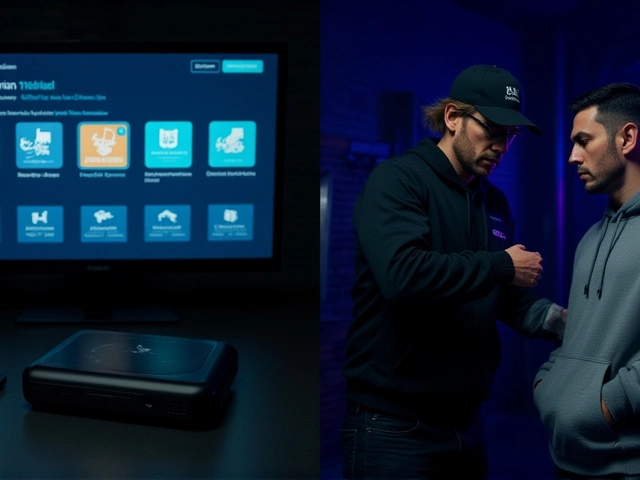It wasn’t a birthday, a wedding, or even a tour anniversary. But on a humid night in late 1969, at Fillmore East in New York City, rock history turned on a single guitar. Joe Walsh, then 22 and riding high with the James Gang, handed Jimmy Page a 1959 Gibson Les Paul Standard—sunburst finish, worn edges, one pickup slightly hotter than the other. Page didn’t just take it. He played it. And for the next 40 years, it became the voice of Led Zeppelin.
The Guitar That Almost Wasn’t
Page didn’t start with a Les Paul. His debut album with Led Zeppelin, released in January 1969, was recorded almost entirely on a Fender Telecaster—a gift from fellow British guitarist Jeffrey Beck. But Page knew something was missing. "I’ve looked for a Les Paul," he told Walsh in a backstage chat. "There aren’t any in England. And Led Zeppelin ain’t making it with a Telecaster." Walsh, who’d been hauling two Les Pauls across the U.S. since 1967, had one he loved and one he didn’t. "I kept the one I liked the most," he later told Guitar World in 2012. "I flew to New York with the other one. I laid it on him and said, ‘Try this out.’ He really liked it. So I gave him a really good deal—about 1,200 bucks." Turns out, that wasn’t charity. Walsh says he charged Page exactly what he’d spent: airfare, hotel, the cost of the guitar itself. "Whatever my expenses were, that’s what I charged him." But the emotional weight? That was free.
Why This Guitar Mattered
In 1969, a 1959 Gibson Les Paul was a ghost instrument. Only about 600 were ever made. Most were sitting in pawn shops, forgotten by players chasing brighter, newer tones. But Page? He heard something else. The mahogany body, the carved maple top, the PAF pickups—they didn’t just produce sound. They breathed. They growled. They screamed.
That Les Paul became the backbone of Led Zeppelin II (released October 22, 1969), where "Whole Lotta Love" was born in a single take. It carried "Stairway to Heaven" through its quiet rise and thunderous climax. It was the same guitar Page used on Led Zeppelin III (October 5, 1970), Led Zeppelin IV (November 8, 1971), and even the final studio album, Presence, in 1976.
"I had it right through to the O2," Page told Guitar World in 2023, referring to the band’s reunion at London’s O2 Arena on December 10, 2007. "Most people have got other guitars they’ll play. But no matter what, it’s the same Les Paul." That’s not just loyalty. That’s destiny.
Gift or Sale? The Story Keeps Shifting
Here’s the twist: Walsh says he sold it. Page says he gave it.
According to Walsh’s 2012 interview, it was a transaction. "I gave him a really good deal." But in a 2023 Instagram post, Page wrote: "Joe brought a Les Paul Standard along to a Fillmore East gig on the first leg of our American tour and said, ‘You’ve got to have this guitar.’ I said, ‘Well, I don’t need it, Joe—I’ve got a Les Paul Custom.’" Wait—what?
Page’s recollection contradicts Walsh’s. One says it was a purchase. The other says it was a gift. And Page even claims he already owned a Les Paul Custom. But historical evidence suggests otherwise. The first known photo of Page with a Les Paul Standard is from the Fillmore East show in March 1969. He’s holding it on stage, not his Custom. And his Custom? It’s missing from all studio sessions after January 1969.
Here’s what’s likely: Walsh gave Page the guitar during a moment of generosity—but Page, ever the businessman, insisted on paying. Not because he didn’t appreciate it, but because he knew its value. And maybe, just maybe, he didn’t want to owe his friend a debt he couldn’t repay.
The Ripple Effect
That guitar didn’t just shape Led Zeppelin. It shaped rock.
Before Page, the Les Paul was a jazzman’s tool. After him? It became the weapon of choice for every heavy guitarist from Slash to Kirk Hammett. The riff of "Whole Lotta Love"? That’s not just tone—it’s physics. The way the strings ring out, the feedback that doesn’t screech but sings—it’s the 1959 Les Paul’s DNA.
"Whatever riffs already exist within the walls of a guitar," wrote Guitar World, "it’s merely the player’s job to coax them out." Walsh didn’t just hand Page a guitar. He handed him a legacy.
What Happened to the Guitar?
It’s still in Page’s possession. He keeps it in a climate-controlled vault, rarely played live anymore. But in 2023, he allowed a rare photo to be published: the same sunburst finish, the same dings near the bridge, the same worn frets. The guitar’s serial number? 9 1071. It’s listed in Gibson’s archives as one of the last 1959 Standard models produced.
Walsh? He went on to join the Eagles. He never bought another Les Paul like it. "I didn’t need to," he said. "I’d already given away the one that mattered." And maybe that’s the real gift—not the guitar, but the trust. The belief that someone else could make it sing better than you ever could.
Frequently Asked Questions
Did Jimmy Page really use only one guitar for Led Zeppelin’s entire career?
Yes, the 1959 Gibson Les Paul Standard given to him by Joe Walsh was his primary instrument from 1969 through Led Zeppelin’s final studio albums and even their 2007 O2 Arena reunion. Though he occasionally used other guitars for specific tones—like a Fender Telecaster for "The Rain Song"—the Les Paul was his go-to for nearly every iconic riff and solo. He kept it through 12 studio albums and over 300 live shows.
Why were Les Pauls so rare in England in 1969?
Gibson Les Pauls were primarily distributed in the U.S., and few made it to the UK due to import restrictions and limited demand. British guitarists in the mid-60s favored Fenders and Gretsch models. By 1969, only a handful of 1959 Les Pauls existed in the UK, and most were owned by collectors or sitting in pawn shops. Page’s search for one was genuine—and that scarcity made Walsh’s gesture even more significant.
How much is Joe Walsh’s 1959 Les Paul worth today?
A 1959 Gibson Les Paul Standard in original condition can fetch over $1 million at auction. Page’s guitar, with its documented history and provenance, is estimated at $1.5–$2.3 million. But its true value isn’t monetary—it’s cultural. It’s the instrument that defined the sound of classic rock, and one of the few guitars in history that can be traced directly to the creation of "Stairway to Heaven."
Did Joe Walsh ever regret giving away his guitar?
Never. In interviews, Walsh always said he gave it because Page needed it more. "I just thought he should have a Les Paul, for godsakes!" He never bought another like it, even as his own fame grew with the Eagles. He’s said the guitar’s legacy was worth more than any sale price. "I didn’t lose a guitar," he told Guitar World. "I helped make a legend."
Why did Jimmy Page choose the Les Paul over the Telecaster?
The Fender Telecaster was bright and twangy—perfect for The Yardbirds’ blues-rock. But Led Zeppelin needed heavier, thicker tones for songs like "Immigrant Song" and "Black Dog." The Les Paul’s humbucker pickups delivered sustain, warmth, and midrange punch that the Telecaster couldn’t match. Page said the Les Paul "had the guts" for Zeppelin’s sound. The Telecaster was the past. The Les Paul was the future.
Is there any proof the guitar was used on Led Zeppelin’s debut album?
No. The debut album was recorded entirely on Page’s Fender Telecaster, as confirmed by studio logs and Page’s own statements. The Les Paul didn’t enter the picture until early 1969, during the sessions for Led Zeppelin II. That’s why the first album sounds different—it’s the sound of a band transitioning. The Les Paul was the missing piece.






